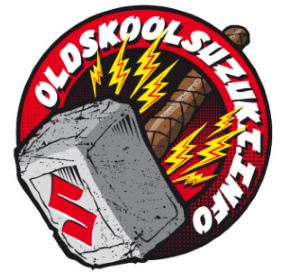-
Posts
5,758 -
Joined
-
Last visited
Content Type
Profiles
Forums
Events
Everything posted by Gixer1460
-
The reserve should also be vacuum controlled. The prime position just lifts the diaphragm to admit fuel to 'prime / fill empty float bowls. And yes your floats and their associated float valves should not allow fuel to flow once the bowls are full - so they need a service as well! I can't see how trying to control a leaky diaphragm is going to help - even if you 'turn it off' it'll still leak which the carbs can't stop either!
-
Your 1st statement is correct. The 2nd is not. Annealing is the very act of heating a material to soften it - it may be cooled quickly or slowly ! It makes no difference to its properties. The rapid cool is obviously quicker and leaves less oxide on the metal. Yer pays yer money and takes yer choice! I've nothing against MLS gaskets and most, if not all, turbo'd Superstreet bikes that are capable of 3 bar boost are using MLS. BUT they are also alloy blocked, alloy head and alloy pistons so relative expansion rates are broadly similar and are water cooled. Our older engines have steel liners with uncontrolled cooling - whether this makes a difference I don't know in regard to gasket performance?
- 25 replies
-
- 1
-

-
The O rings I refer to are piano wire rings that are seated in grooves machined into the cylinder liner lip - about 1/8" back from the bore. The wire projects just enough to form a pinch point on the gasket increasing its seal through increased pressure. Never needed any other rubber o rings that weren't standard with the engine although mostly any pressurised oil up to the cylinder head was via external lines - only oil through the block was draining the head and under no pressure. Regarding annealing - I used to do mine on a two ring gas burner / hob, to dull cherry red and straight into basin of cold water. At a push, at the track, a Mapp gas torch can be used but takes longer - easier to swap gaskets and re- do them at home!
- 25 replies
-
- 2
-

-
Unfortunately we look at Blandits as parts donor bikes so info is going to be minimal. Unless you want to mix / match / engineer to fit, it may be quicker to throw a whole front end at it as everything will work together and unlikely the stem will be different between frames!
-
They can seal and seal well if you follow the requirements. 1. they need O rings, won't work without. 2. anneal the copper before every use 3. use Gaskacinch or similar top and bottom. Swapping to an MLS is an option but most are thinner than the copper you are removing and so will bump up the CR a bit. Obviously with the 'application' this may be a bonus or it could tip the balance on a 'on the edge' tune-up?
- 25 replies
-
Wadda ya mean - he was here for all of 3 minutes LOL!
-
You've got a left half and a right half? or a top and a bottom? - are they identical? No - hence the different part numbers!
-
A K&N replacement filter for an OEM one won't need re-jetting - anything other than using the std. airbox will ! I don't know the bike but possibly the box lid is incorporated with the filter - new filter = new lid? Just guessing? Don't worry - professionals can be equally clueless if trying to relieve you of folding!
-
A brass wire wheel is about as abrasive as you want to use - aluminium to soft for 'honing' - get the gunk / rust off, clean seal grooves, job done.
-
she's definately got a stutter LOL!
-
No 'think' about it - they aren't!
-
The bike with those carbs was designed to use an airbox - i'm not saying it will cure everything as i'm not sure of what could be wrong but it'd be a good start! If you don't want to use an airbox then buy a Dynojet kit and aftermarket filters of your choice and fit those. It'll cost you the best part of £300/ $300 and still require some tweaking! The factories really do know what they are doing when they build bikes, spending billions of yen just for a backyard tinker monger to rip them apart cos he thinks he knows better! BTW just fitting K&N's won't solve the problem !
-
and take your finger off, if it happens to be in there!
-
That isn't bad - stop being a girl! Just clean the starter clutch in some petrol / brake cleaner, check the screws fixing it to the rotor and CAREFULLY dress the galling on the crank taper and int. rotor diameter with wet & dry paper, then lap with valve grinding paste - job done. Don't touch the ground surface where the starter clutch rollers run!
-
Internal use / Hy-vo cam chains, in fact most any cam chain will be endless due to a poorly made joint failing proving fairly catastrophic!
-
Not sure how they work then as most Suzuki tacho's need two pulses to 'count' correctly ie. both coils, hence why the ignition module is used.
-
I thought the tacho signal came from the CDI module?
-
Presumably this is in the garage / shed or outside on the stand? That'll tell you nothing as regards carb functioning - a large part of which is load on the engine. On a stand its virtually zero - it needs to be on road driven or on a dyno to load the engine. This is the only way to find out if the set up is working correctly or not. The flatline response @ 4-5k is fairly typical with CV carbs and no airbox - it'll be even more pronounced on the road and under load!
-
If a 'flexible' plastic is no longer flexible - its broken down, UV degradation, call it what you will - its failed. Re: The highlighted bit above . . . . . that you could see! There are plenty of accidents caused by 'my brakes suddenly failed' ! Would you similarly trust 30, 35 or 40 yr old tyres?
-
And it didn't occur to you to change anything rubber - just cos it 'looked' ok? Ride behind this man guys - he has 35+ year old brake hoses!
-
All of your questions are covered in a 'decent' workshop manual - even the much maligned 'Haynes' in the UK / Europe . . . . Clymer in the US are generally better, so use them, read it, then ask questions!
-
Nowt wrong with vacuum fuel taps - i've had loads of bikes fitted with them and never had an issue, most even had an 'Off' position that I never used!
-
From the part # Google suggests this is from a GSX1100 ET (GS1100 for our US cousins) and not the GSX1100 EFE (GS1150) - hence why it doesn't fit right!
-
Stop being a lazy bastard, take the seat off, undo the tank rear bolt, pivot the tank up on its two front mounts and attach hose to tap so that its parallel to underside of the tank, then drop tank, bolt up, re install seat and marvel at how inconspicuous it now is! Brown, suede seat cover . . . . . . . . that's nice in a 70's retro stylee ! ! ! Right up Vizman's alley LOL!
- 1 reply
-
- 1
-

-
Looking at that picture, the drive chain tension variations must be epic!


